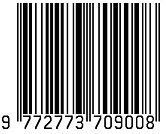Cement and Clay Bricks Reinforced with Coconut Fiber and Fiber Dust
DOI:
https://doi.org/10.31357/ait.v2i3.5534Abstract
For generations, Sri Lankans use cement bricks and clay bricks as common building materials in the construction field. This study investigates the feasibility of improving the strength while lowering the mass and thermal conductivity of bricks by adding coconut fiber or coconut fiber dust as a reinforcing material. Each reinforcing material is used in both clay and cement bricks. The mixtures are prepared according to varying volume ratios of the raw materials used. Coconut fibers are combed and cut into 4-5 cm pieces and dry coconut fiber dust is sieved using a 4 mm sieving mesh. The mixture is prepared by hand mixing and the traditional processes are replicated in making the bricks. Tests are carried out to understand the variation of mass, compressive strength, thermal conductivity, and water absorption of the reinforced bricks in comparison to bricks with no reinforced material. The cement brick reinforced with coconut fiber achieves the expected results in the compressive strength test and thermal conductivity test but underperformed when comparing masses and water absorption. Clay bricks reinforced with coconut fiber dust show impressive results in compressive tests and with the addition of dust, the appearance seems to have changed. It is observed that reinforcing cement bricks with coconut fiber could double the compressive strength along with a 5% reduction in mass. Reinforcing clay bricks with coconut fiber dust increases its compressive strength by over 70% while decreasing the mass by over 30 %. The study proves that it is feasible to use reinforced coconut fiber or coconut fiber dust to improve the properties of both clay and cement bricks, while clay bricks reinforced with coconut fiber are an exception.

Downloads
Published
How to Cite
License
Copyright (c) 2022 Anjan Mevan Rajapakse, Dulini Yasara Mudunkotuwa, Sanura Naveen Sanjula, Kelum Nishantha, Tharaka Ruwan Bandara

This work is licensed under a Creative Commons Attribution-NonCommercial-NoDerivatives 4.0 International License.
The Authors hold the copyright of their manuscripts, and all articles are circulated under the terms of the Creative Commons Attribution License, which permits unrestricted use, distribution, and reproduction in any medium, as long as that the original work is properly cited.
The use of general descriptive names, trade names, trademarks, and so forth in this publication, even if not specifically identified, does not imply that these names are not protected by the relevant laws and regulations. The authors are responsible for securing any permissions needed for the reuse of copyrighted materials included in the manuscript.




